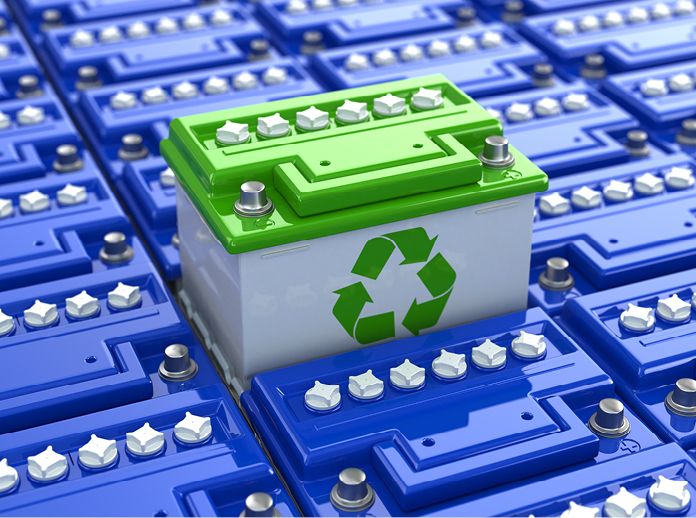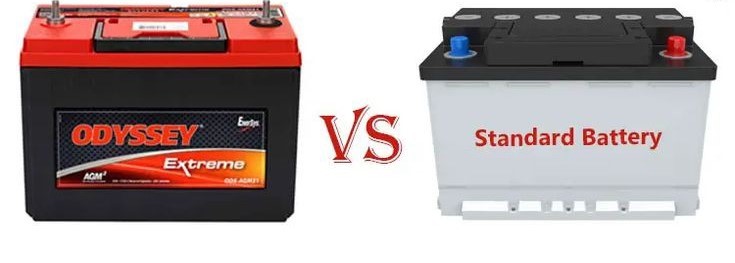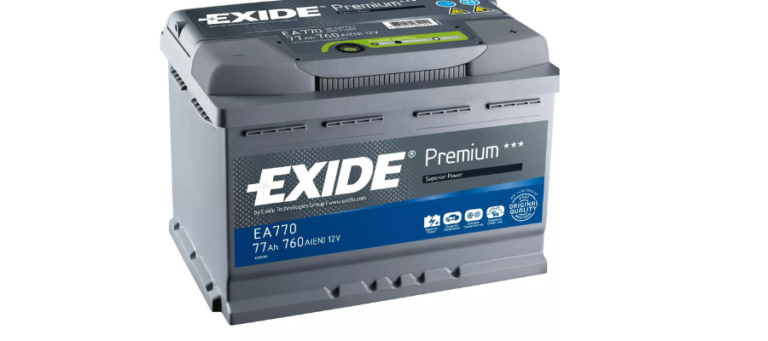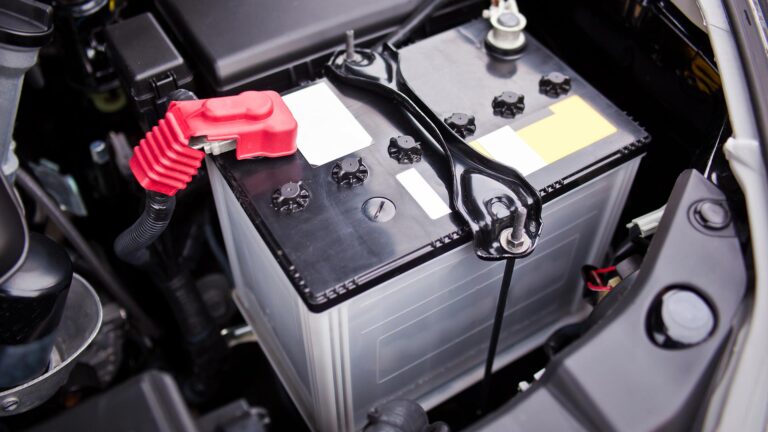Elevate Sustainability with UPS Battery Recycling
Contents
- 1 Elevate Sustainability with UPS Battery Recycling
- 1.1 The Crucial Role of UPS Battery Recycling:
- 1.2 The Consequences of Improper Battery Disposal:
- 1.3 The Building Blocks of Recyclable UPS Battery Components:
- 1.4 When to Bid Farewell: Signs Your UPS Battery Needs Recycling:
- 1.5 A Greener Choice: Where to Recycle Your Old UPS Batteries:
- 1.6 DIY UPS Battery Recycling Tips: Safety and Storage
- 1.7 The Recycling Journey: How UPS Batteries Get a Second Life
- 1.7.1 1. Collection:
- 1.7.2 2. Transportation:
- 1.7.3 3. Inspection and Sorting:
- 1.7.4 4. Battery Disassembly:
- 1.7.5 5. Separation of Components:
- 1.7.6 6. Neutralizing Hazardous Materials:
- 1.7.7 7. Recycling the Components:
- 1.7.8 8. Reusing Materials:
- 1.7.9 9. Environmentally Friendly Disposal:
- 1.7.10 10. Quality Control:
- 1.8 The Manufacturer Initiatives: Promoting Responsible UPS Battery Disposal
- 1.9 Conclusion:
- 1.10 FAQ

In this article, we’ll take you on a journey to understand the importance of UPS battery recycling, how to recognize when it’s time for a change, where to take your old batteries for responsible disposal, and the eco-friendly processes they undergo to get a second life.
Uninterruptible Power Supply (UPS) batteries are unsung heroes, keeping our devices running during blackouts. Yet, as they age and lose efficiency, they pose environmental challenges if incorrectly handled. This guide simplifies the entire process, ensuring you have the knowledge to make eco-conscious choices.
We’ll delve into the recycling processes of lead-acid and lithium-ion batteries, the most common types used in UPS systems. You’ll learn about improper disposal’s environmental impact and responsible recycling’s positive influence. We’ll also explore the legal aspects and manufacturer initiatives promoting eco-friendliness.
Join us to discover the essential steps in responsible UPS battery recycling. By the end, you’ll know to make the right choices and contribute to a greener, more sustainable future. Let’s begin our adventure in UPS battery recycling!
The Crucial Role of UPS Battery Recycling:
UPS Battery recycling isn’t just a choice; it’s a responsibility. These batteries contain hazardous materials that can harm our environment if improperly handled. When you recycle them, you help prevent pollution and reduce the demand for new resources.
Moreover,UPS Battery recycling is conserves energy and lowers greenhouse gas emissions. It’s a small action that makes a big difference in protecting our planet. So, next time your UPS battery needs a change, remember the importance of recycling. It’s a simple step towards a cleaner, greener world.
The Consequences of Improper Battery Disposal:

Improper battery disposal is an environmental time bomb. Batteries contain harmful chemicals like lead, mercury, and cadmium. When tossed in the trash, these chemicals can leak into the soil and water, causing pollution.
These pollutants harm plants, animals, and people. They can even contaminate our food and water sources. The energy used to make new batteries also adds to our carbon footprint.
Proper battery recycling is a small effort with a massive positive impact. It helps protect our planet and ensures these hazardous materials are handled safely. So, always recycle your batteries for a cleaner, safer environment.
The Building Blocks of Recyclable UPS Battery Components:

UPS batteries might seem like a single unit, but they’re made of recyclable parts. The main components include lead-acid or lithium-ion cells, plastic casings, and metal connectors. These parts are valuable for recycling.
Lead-acid cells contain lead and sulfuric acid, which can be reused in new batteries. Lithium-ion cells have metals like cobalt and nickel that also get a second life. The plastic and metal components are melted down and used in various products.
So, when it’s time to replace your UPS battery, remember that its components can be given a new purpose through recycling.
The Simple Path to Recycling Lead-Acid UPS Batteries:
Lead-acid batteries are the champs of UPS power. When they retire, they deserve a second life. The recycling process is straightforward:
Collection:
Used batteries are gathered from various sources, like recycling centers and businesses.
Breaking It Down:
The battery’s outer casing is removed, and the lead plates and sulfuric acid are separated.
Cleaning and Reuse:
The lead can be melted down and used for new batteries, and the acid gets neutralized or reused.
Plastic and Metal:
The remaining plastic and metal parts are recycled into various products.
Recycling Lead-Acid batteries is a win-win for you and the planet.
The Eco-Friendly Journey of Recycling Lithium-Ion UPS Batteries:
Lithium-Ion UPS batteries are the new heroes of backup power, and they too can be given a green second life through recycling:
Collection:
Collect used batteries from drop-off locations or recycling centers.
Disassembly:
Break the battery down, separating its valuable materials.
Heating and Recovery:
The lithium, cobalt, and nickel are recovered through heating processes.
Material Repurposing:
These recovered materials are then used to make new batteries, reducing the need for mining.
Recycling Lithium-Ion batteries isn’t just eco-friendly; it conserves precious resources, making it a smart choice for the environment.
When to Bid Farewell: Signs Your UPS Battery Needs Recycling:
Your UPS battery works silently until it doesn’t. Here’s how to know it’s time for a replacement:
Shorter Runtime:
If your UPS doesn’t keep your devices powered as long as it used to during outages, it’s a sign.
Frequent Beeping:
A constant beeping from your UPS may signal a battery problem.
Swollen or Leaking:
Check for physical damage like swelling or leaking, which are sure signs of trouble.
Age Matters:
UPS batteries have a lifespan usually around 3-5 years. If yours is older, it’s time to consider recycling.
Recognizing these signs ensures a timely battery replacement and responsible recycling.
A Greener Choice: Where to Recycle Your Old UPS Batteries:
When your UPS batteries need a new home, there are eco-friendly options:
Retail Stores:
Many electronics and office supply stores accept old batteries for recycling.
Recycling Centers:
Local or hazardous waste facilities often welcome used batteries.
Manufacturer Programs:
Some UPS manufacturers offer take-back programs, making recycling easy.
Online Search:
A quick web search can reveal nearby collection points or events for battery recycling.
By choosing responsible recycling locations, you not only declutter but also help protect the environment. Make the green choice for your old UPS batteries.
DIY UPS Battery Recycling Tips: Safety and Storage
Before you recycle your UPS batteries, follow these simple DIY tips:
Handle with Care:
Wear gloves and safety goggles when removing the battery to protect against any potential leaks.
Store Upright:
Keep used batteries in an upright position to prevent spills.
Cool and Dry:
Store them in a cool, dry place away from direct sunlight or extreme temperatures.
Label and Date:
Mark the date when you removed the battery. It helps track their lifespan.
Remember, safe storage is a vital step in responsibly disposing of UPS batteries. These simple precautions make the recycling process hassle-free and eco-friendly.
The Recycling Journey: How UPS Batteries Get a Second Life

Uninterruptible Power Supply (UPS) batteries are essential for keeping our devices running during power outages, but what happens when they reach the end of their useful life? Recycling is the answer. In this article, we’ll walk you through the step-by-step process of how UPS batteries are recycled in an eco-friendly way.
1. Collection:
The recycling process begins with the collection of used UPS batteries. These batteries are gathered from various sources, including recycling centers, businesses, and individuals. Ensuring these batteries are correctly collected is the first crucial step in recycling.
2. Transportation:
Once collected, the batteries are transported to recycling facilities. These facilities have the tools and expertise to safely and efficiently handle battery recycling.
3. Inspection and Sorting:
At the recycling facility, the batteries undergo a thorough inspection. This step is essential for identifying the type of batteries and their condition. Batteries can vary in chemistry, with the most common types being lead-acid and lithium-ion.
4. Battery Disassembly:
The batteries are then disassembled to access their internal components. This step involves removing the outer casing and separating the different materials that comprise the battery. Lead-acid and lithium-ion batteries have other internal structures, and the recycling process for each varies accordingly.
5. Separation of Components:
The next step is to separate the various components of the battery. In the case of lead-acid batteries, this includes isolating the lead plates and the sulfuric acid. These components can be processed separately and recycled.
6. Neutralizing Hazardous Materials:
The sulfuric acid extracted from lead-acid batteries is neutralized and treated to make it safe for disposal or reuse in various applications.
7. Recycling the Components:
The lead plates and other materials are then processed for recycling. In the case of lead-acid batteries, the lead can be melted down and used to manufacture new batteries. On the other hand, lithium-ion batteries contain valuable metals like cobalt and nickel, which can also be recovered and reused.
8. Reusing Materials:
Recycling is not just about reducing waste; it’s also about reusing valuable materials. Recycled materials from old batteries can be used to produce new batteries, reducing the need for mining and preserving natural resources.
9. Environmentally Friendly Disposal:
Any non-recyclable or hazardous materials left over from the recycling process are disposed of in an environmentally responsible manner to prevent environmental harm.
10. Quality Control:
Before the recycled materials are used in new batteries or other products, they undergo quality control to ensure they meet the necessary standards for safety and performance.
The Manufacturer Initiatives: Promoting Responsible UPS Battery Disposal
UPS manufacturers have taken significant strides to encourage responsible UPS battery disposal in the quest for a greener and more sustainable future. These initiatives underscore their commitment to environmental stewardship. Here are some ways in which UPS manufacturers are leading the charge:
Take-Back Programs:
Many UPS manufacturers now offer take-back programs that accept old UPS batteries for recycling when you purchase new ones. This makes it convenient for customers to dispose of their old batteries responsibly.
Environmentally Friendly Designs:
Some manufacturers are designing UPS systems with an emphasis on recyclability. By making products more accessible to disassemble and recycle, they reduce the environmental impact of UPS battery disposal.
Educational Resources:
Manufacturers are providing educational materials and resources to inform customers about the importance of recycling and how to do it properly. This awareness helps users make eco-conscious choices.
Partnerships with Recyclers:
Collaborations with recycling companies ensure that old batteries are processed in an environmentally friendly manner. This approach supports a closed-loop system where battery materials are reused.
UPS manufacturers play a pivotal role in promoting responsible battery disposal. Their proactive efforts reduce the environmental impact and set a positive example for other industries.
Conclusion:
A Greener Tomorrow: The Vital Role of UPS Battery Recycling
In conclusion, recycling UPS batteries is not merely a responsible choice; it’s a critical step toward a cleaner and more sustainable future. These unassuming power sources hold tremendous potential to reduce environmental harm and conserve precious resources.
UPS Battery Recycling prevents hazardous materials like lead and acids from leaking into our soil and water, protecting our ecosystems and health. It also minimizes the need for new resource extraction and energy consumption, which reduces carbon emissions and lessens our carbon footprint.
This eco-conscious action empowers us all to be responsible stewards of the environment. So, when your UPS battery reaches the end of its useful life, remember that recycling isn’t just an option; it’s a necessity. Together, we can profoundly impact the planet and pave the way for a greener, brighter tomorrow.
FAQ
Q1: Why is UPS battery recycling important?
A1: UPS battery recycling is important because it helps protect the environment. When UPS batteries are recycled, we can reuse valuable materials instead of letting them harm the Earth. It also reduces the need to dig up new materials, which saves natural resources.
Q2: Can I recycle my UPS batteries at home?
A2: It’s best to take UPS batteries to a special recycling center or give them to a professional. They know how to handle the batteries safely. This way, the batteries are recycled properly and don’t cause harm to the environment.
Q3: Are there any harmful materials in UPS batteries?
A3: Yes, UPS batteries have some chemicals that can be harmful if not handled correctly. That’s why it’s very important to make sure they’re recycled by experts who know how to do it safely.







